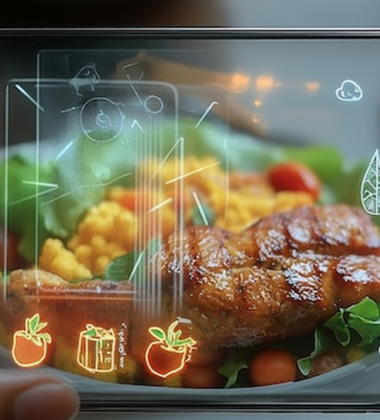As the world becomes more interconnected, international food trade is no longer just about import/export logistics—it’s a powerful force shaping food innovation, supply chains, and market access. If you’re planning to exhibit at the Food and Beverage Expo USA, especially during the Global Products Expo 2025 (happening June 26–28, 2025 at the New Jersey Expo Center), understanding the influence of global trade policies could make or break your expansion strategy.
Let’s explore how trade agreements are transforming what’s possible in the food and beverage industry—and what it means for innovation at the expo level.
Why International Food Trade Matters More Than Ever
International food trade refers to the import and export of food products across national borders. It’s governed by a complex network of:
- Bilateral and multilateral trade agreements
- Tariff structures and quotas
- Food safety standards
- Labeling and regulatory policies
The acceleration of global agreements—like the U.S.-Mexico-Canada Agreement (USMCA), EU-Japan Economic Partnership Agreement, and African Continental Free Trade Area (AfCFTA)—is creating ripple effects in how food is grown, packaged, priced, and promoted.
Trade Agreements: Catalysts or Constraints for Innovation?
While many view trade agreements as bureaucratic necessities, they’re actually powerful innovation drivers. Here’s how:
1. Tariff Reductions Open Doors for Emerging Brands
Lower tariffs make it easier for small- and mid-sized food startups to enter foreign markets, accelerating product innovation and diversification. For example, under USMCA, Mexican agri-food companies have expanded their plant-based exports into U.S. retail—bringing new textures, proteins, and regional flavors to American consumers.
2. Standardized Food Safety Protocols Enable Global Scaling
Agreements like Codex Alimentarius foster aligned food safety standards, allowing brands to scale product lines faster without having to reformulate for every country.
3. Protected Designations Encourage Authenticity
Agreements that enforce geographic indications (GIs)—like Champagne, Parmigiano Reggiano, or Colombian coffee—support traditional food systems while giving international consumers access to genuine, high-quality products.
4. Sustainability Clauses Are Pushing R&D
Modern agreements are including climate-smart agriculture, waste reduction mandates, and fair labor protections. This pushes innovators to develop packaging, formulations, and supply chains that align with ethical and environmental priorities—a growing theme at expos like the Global Products Expo 2025.
The Flip Side: When Trade Restrictions Hinder Progress
Of course, not all policies are innovation-friendly. Key barriers include:
- Tariff escalation on processed foods (e.g., raw cocoa may be duty-free, but chocolate bars incur high taxes)
- Non-tariff barriers like labeling regulations, ingredient bans, and inspection delays
- Export quotas that limit how much of a commodity can be sold abroad
- Sudden geopolitical shifts (e.g., Brexit, U.S.-China tensions) that disrupt supply lines overnight
These restrictions can deter brands from experimenting with global formats or ingredients—especially for startups without legal teams.
What Exhibitors Should Watch for in 2025
As trade dynamics shift, keep an eye on these trends shaping international food trade and how they’ll surface at the Food and Beverage Expo USA:
🌍 The Rise of Regional Trade Zones
Africa, Southeast Asia, and Latin America are forming powerful regional blocs with internal tariff relief and innovation grants. These zones could become the next big export targets for U.S. and European brands.
📦 Demand for Transparent Supply Chains
Retail buyers are now demanding full traceability—from farm to shelf. Exhibitors showcasing blockchain-enabled sourcing or regenerative agriculture credentials will have a competitive edge.
📊 Data-Driven Import Decisions
AI tools and predictive trade analytics are helping importers and distributors choose winners faster. Brands must prepare their data (from lab reports to marketing decks) to align with cross-border compliance systems.
Making Trade Policy Work for You at the Global Products Expo
If you’re heading to the Global Products Expo 2025 at the New Jersey Expo Center, here’s how to use your knowledge of international food trade to stand out:
- Highlight Trade-Friendly Credentials: List existing certifications, open market access points, and FTA-compliant manufacturing on your booth signage and sales sheets.
- Offer Global Market Case Studies: Show buyers real examples of how your brand has scaled across different trade zones or regulatory systems.
- Educate Through Content: Consider creating a downloadable brochure or QR code that explains how your product aligns with global trends—labeling laws, sustainability clauses, and more.
Remember, buyers aren’t just looking for quality—they’re looking for exportability.
Final Thoughts: The New Language of Innovation is Policy-Driven
In the past, food innovation was driven by flavor, convenience, and nutrition. Today, it’s equally shaped by trade agreements, compliance strategies, and border policies.
By understanding the evolving landscape of international food trade, you’re not just preparing your booth—you’re future-proofing your brand.
So when you step into the Food and Beverage Expo USA, make sure your innovation story isn’t just delicious—but globally viable.





